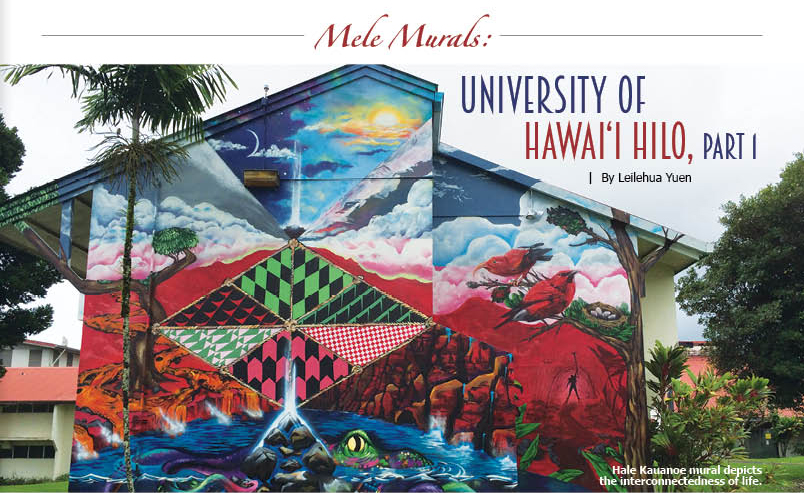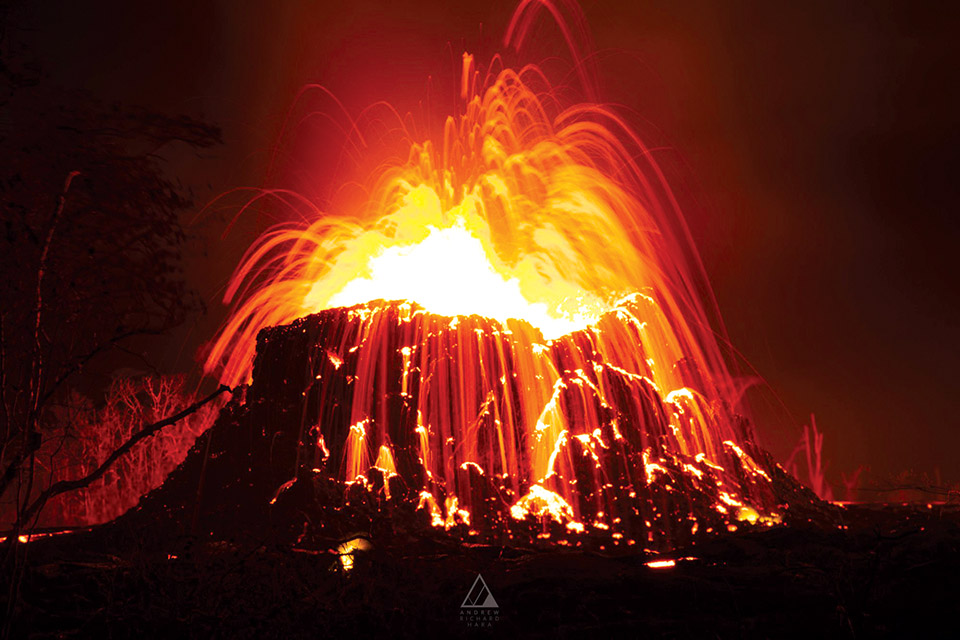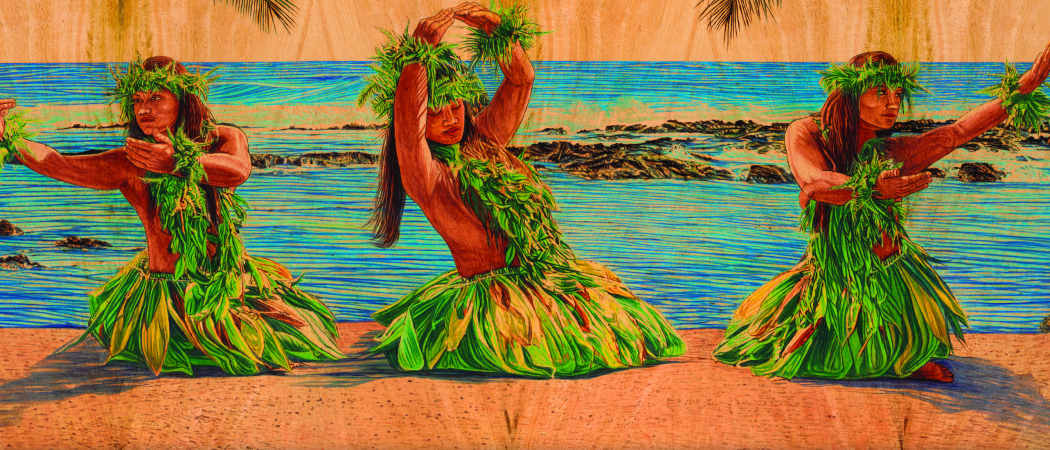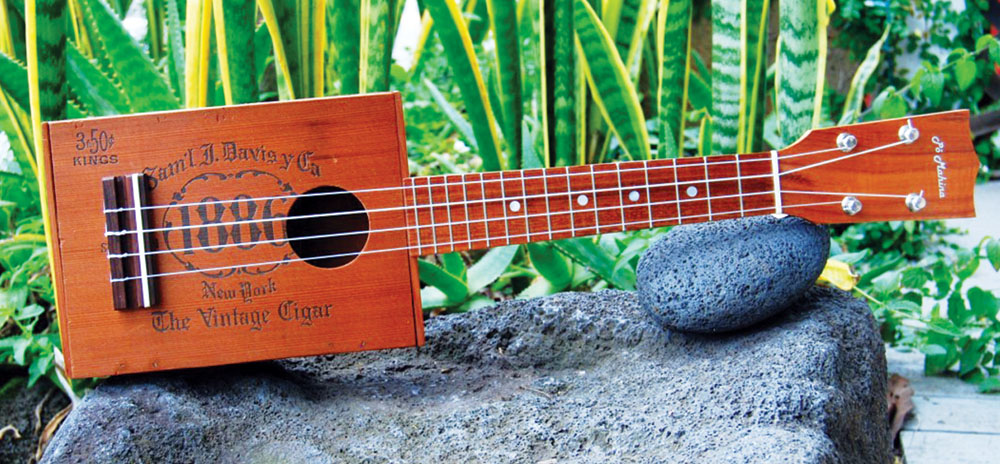
He Knows the Uke from the Inside Out: Sam Rosen—Craftsman, Teacher, and Historian


By Margaret Kearns
Longtime Hawai‘i Island resident Sam Rosen is preserving one of Hawaii’s cultural treasures, one student and one ‘ukulele at a time. Soon after relocating to Hawai‘i Island 33 years ago, Rosen found he finally had the time to slow down and fulfill a long-time personal goal: to learn how to play a musical instrument. An established goldsmith and businessman in Southern California, Rosen said life in the fast lane never seemed to provide the luxury of time for his pau hana interests.
That move, he said, from the frenzied lifestyle of “lala land” to the laid-back, mauka town of Holualoa on Hawai‘i’s Kona side, “is the best thing I’ve ever done!” His first inclination was to finally pick up the instrument he had purchased years ago, a guitar which had been collecting dust ever since. But in no time his attention turned to Hawai‘i’s uniquely “home-grown” instrument: the ‘ukulele. According to Rosen, it was the ‘ukulele’s portability, ease of play, unique sound and colorful history in the islands that quickly won him over.
“When I decided it was the ‘ukulele I wanted to learn to play, I thought I’d learn how to build one first. After all, it’s not a difficult instrument to play; it’s all in the strum,” he said. And while that may be so, Rosen admits he is so busy building and teaching the construction of ‘ukuleles today that he rarely plays, still not having found the time to become as proficient as he’d like. But there’s no rush, he said, and that’s the vibe, the mantra really, at the Holualoa Ukulele Gallery he opened in March 2003 – a place where the curious, the wannabe players and aficionadas alike drop by throughout the day to enjoy some music, talk story and learn much about the instrument that has become a symbol of the islands worldwide.
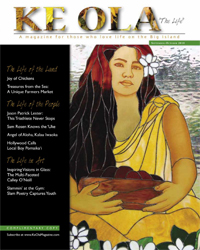
In fact, the gallery, located in central Holualoa and situated in the town’s historic post office building, serves multiple purposes: shop, museum, classroom, gathering place and ‘ukulele-building workshop. Antique instruments in various shapes and sizes line the walls, many of them renditions of the legendary Honolulu-based Kamaka styles. There are square-shaped ukes, often made out of old wooden cigar boxes, and designer Sam Kanaka’s signature “pineapple”‘ukuleles, including Rosen’s treasured 1951 Kamaka. Many of the instruments for sale or in various stages of construction or repair are Rosen’s own creations, made of native woods—mostly koa—which is prized for its fine tone and attractive coloring and grain. Some are beautifully adorned with abalone shell. All of the ‘ukuleles available for purchase, whether built by Rosen or other artists, share one thing in common: they all have been made here in the Hawaiian Islands.
When not teaching the art of ‘ukulele construction at his shop, Rosen most frequently is found leading classes at Holualoa’s Donkey Mill Art Center. Rosen has been on the faculty at the art center since it was first established as the Holualoa Foundation for Arts and Culture in the old “Donkey Mill” property, known locally by the sign on top that was shaped like a donkey.
Rosen’s ‘ukulele-building class runs 10 weeks (four hours each Tuesday from 5:30pm to 9:30pm) and is just one of many on-going classes, workshops, exhibitions and art and cultural events sponsored at the art center each year. Rosen’s class is designed for beginners, although he says even experienced woodworkers will enjoy the challenge of making a tenor ‘ukulele.
“Each of the students may add different embellishments to the instrument to make it truly their own,” he said.
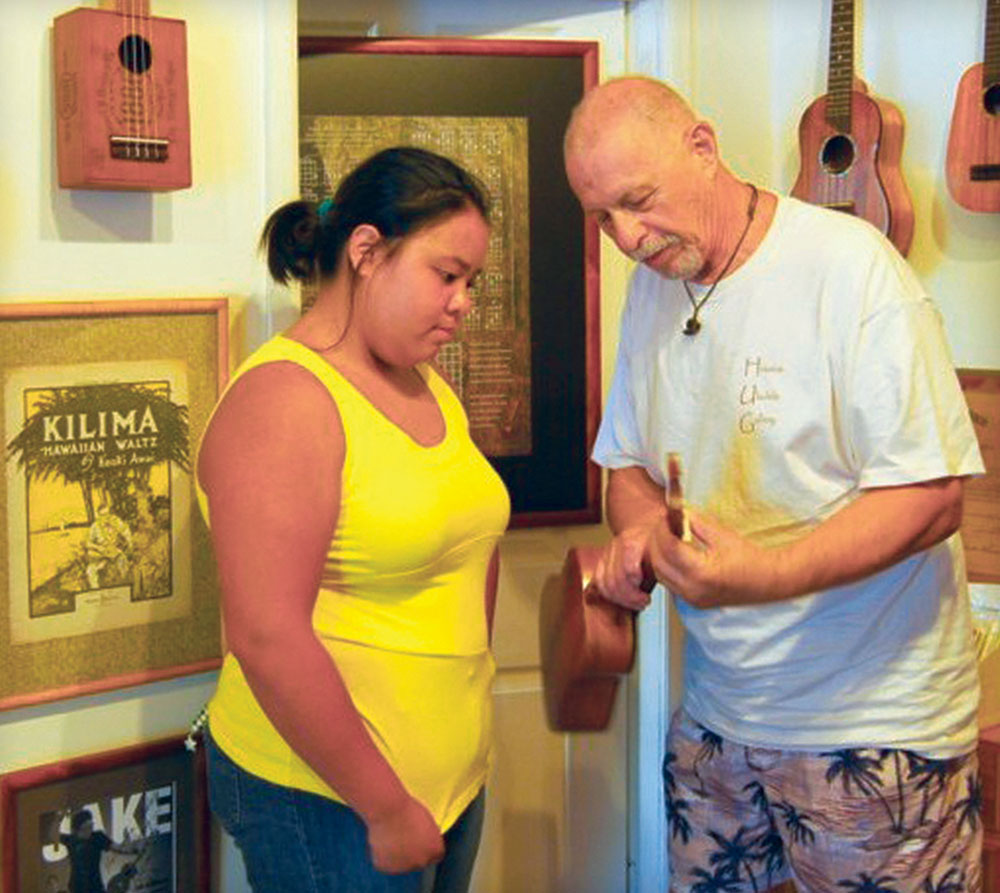
While Rosen credits a number of cultural programs hosted island-wide annually for renewed interest in the ‘ukulele, he says the influence of Hawai‘i native sons like internationally-acclaimed contemporary artist Jake Shimabukuro and the late, great Israel Kamakawiwo’ole (”Braddah Iz”), has been the catalyst for the most recent spike in the ‘ukulele’s popularity.
“It’s primarily these two wildly talented Hawaiian musicians who have captured the imaginations of a new generation of ‘ukulele players,” Rosen said. “The kids coming up represent a new crop of musicians who will not only preserve this cultural treasure but will rocket it to new heights. There really is no limit to what can be done with this portable, easy-to-play and relatively inexpensive instrument.”
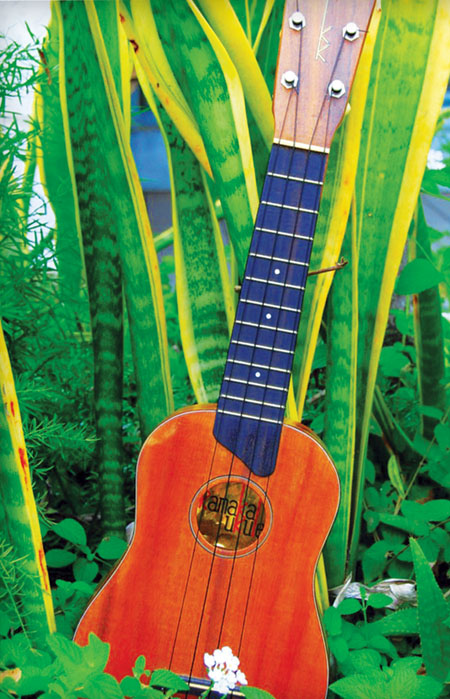
As to the ‘ukulele’s origins in these islands of Hawai‘i, stories abound, each more colorful than the last, and interpretations of the name are nearly as numerous. Some say the ‘ukulele—or an early version of it—appeared in the hands of a newly arrived Portuguese immigrant who had just arrived by ship in the late 1800s and was absolutely ecstatic to be here. As the story goes, he pulled out a small guitar-like instrument, the machete (similar to, though smaller than, the modern Portuguese cavaquinho and the Spanish timple) and began to play it while leaping around the docks singing Portuguese folk songs. According to a story printed in an 1879 edition of the Hawaiian Gazette newspaper, three immigrants, Madeiran cabinet makers (Manuel Nunes, José do Espírito Santo, and Augusto Dias) are credited as the first ‘ukulele makers in Hawai‘i. And the stories go on, but what is fact is the instrument now known as the ‘ukulele emerged here in the late 19th century and it was love at first sight and sound, as it was integrated quickly—with slight modification—into Hawaiian music.
The Hawaiian word ‘ukulele translates roughly as “jumping flea,” and some say the instrument was so-named because of the fast action of musicians’ fingers while playing it. Others suggest the name refers to the Portuguese immigrant jumping happily on the docks, while there are those who prefer to go with a royal interpretation! According to Queen Lili’uokalani, the last Hawaiian monarch, the name means “the gift that came here,” from the Hawaiian words uku (payment or reward) and lele (to come).
Historians say the instrument may not have struck it big with members of Hawaiian Society in the late 19th century, if the royal class had not embraced it. The instrument soared to de rigueur heights when Queen Lili‘uokalani personally played the ‘ukulele to accompany the Hawaiian anthem, “Aloha ‘Oe.” The ardent support and promotion of the ‘ukulele by the Queen’s brother, Hawai‘i’s “Merrie Monarch” King David Kalākaua, a passionate patron of the arts, propelled the instrument into world recognition. According to historical accounts, King Kalākaua frequently incorporated ‘ukulele and hula into programs at royal gatherings for visiting dignitaries.
Today, the ‘ukulele remains one of the most joyful and beloved cultural treasures brought to the Hawaiian Islands by immigrants. Just the mention of its name coaxes a smile, elicits fond memories and tickles the tongue as it rolls off the lips of visitors and island residents alike. ❖
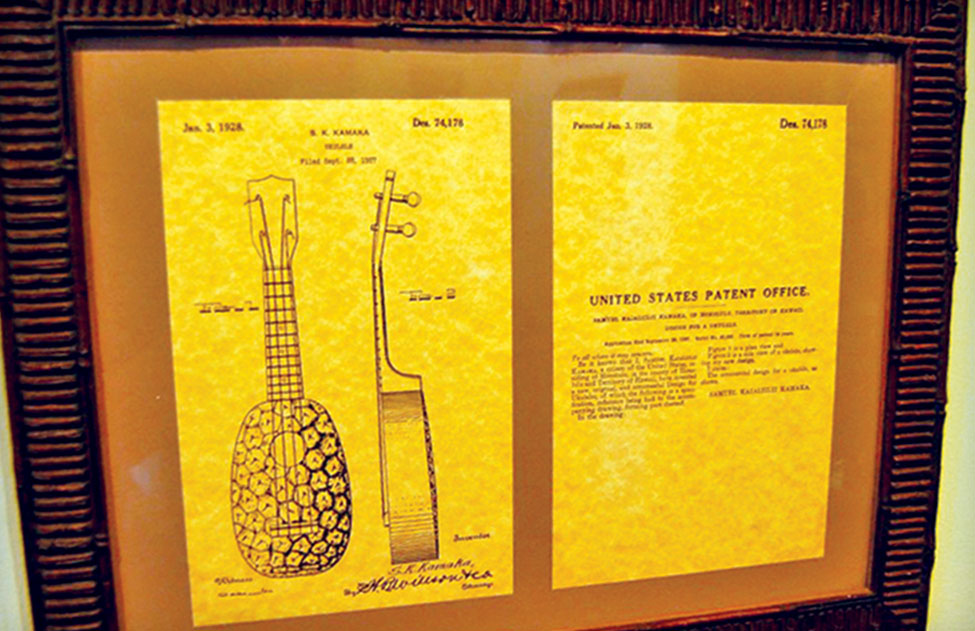
For more information on Holualoa Ukulele Gallery, phone 808.324.1688.
For the Donkey Mill Art Center, visit: www.holualoadonkeymill.org. www.donkeymillartcenter.org.
Contact Margaret Kearns at margaretkearns@gmail.com.
